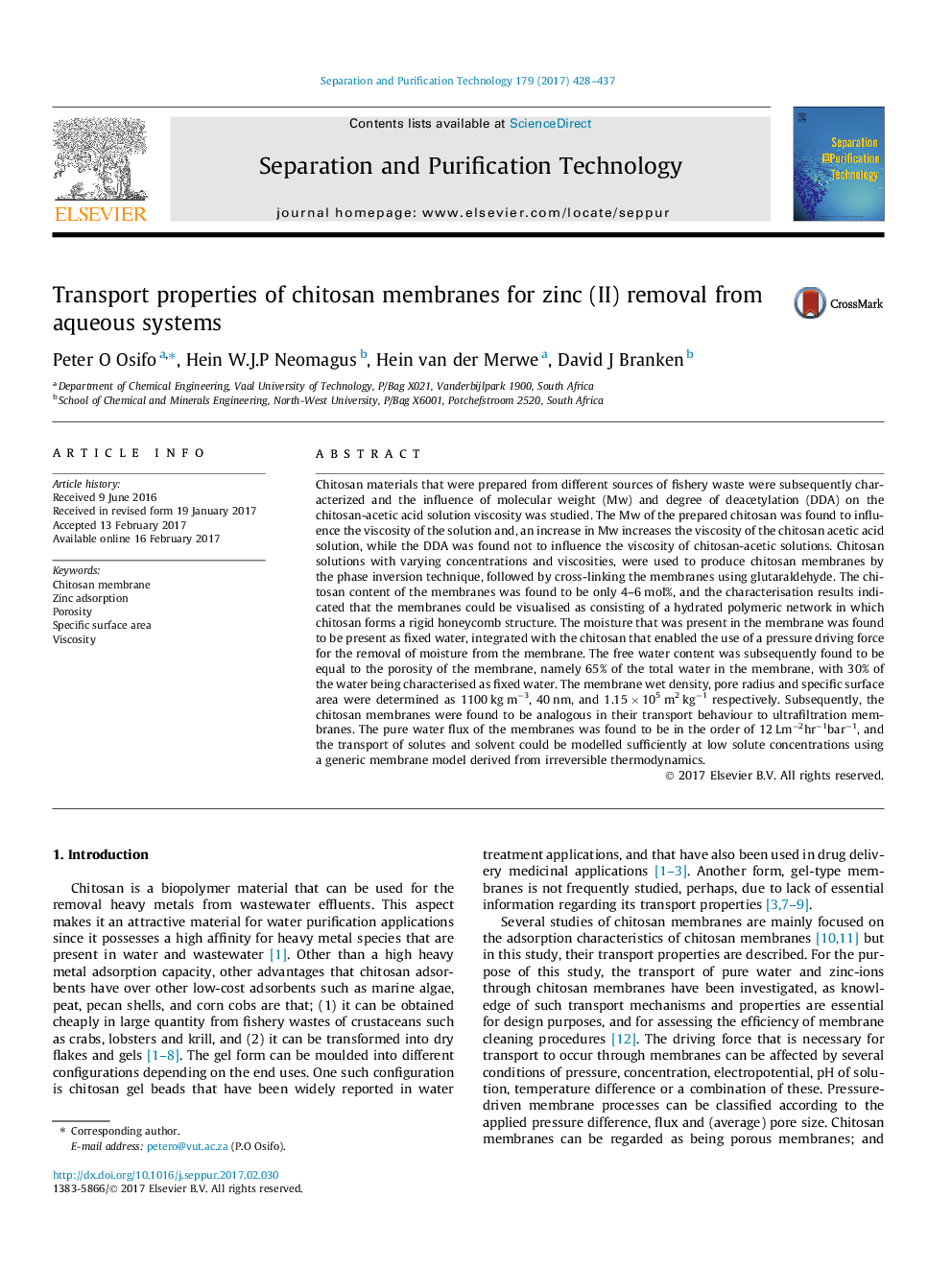| Article ID | Journal | Published Year | Pages | File Type |
|---|---|---|---|---|
| 4990098 | Separation and Purification Technology | 2017 | 10 Pages |
Abstract
Chitosan materials that were prepared from different sources of fishery waste were subsequently characterized and the influence of molecular weight (Mw) and degree of deacetylation (DDA) on the chitosan-acetic acid solution viscosity was studied. The Mw of the prepared chitosan was found to influence the viscosity of the solution and, an increase in Mw increases the viscosity of the chitosan acetic acid solution, while the DDA was found not to influence the viscosity of chitosan-acetic solutions. Chitosan solutions with varying concentrations and viscosities, were used to produce chitosan membranes by the phase inversion technique, followed by cross-linking the membranes using glutaraldehyde. The chitosan content of the membranes was found to be only 4-6 mol%, and the characterisation results indicated that the membranes could be visualised as consisting of a hydrated polymeric network in which chitosan forms a rigid honeycomb structure. The moisture that was present in the membrane was found to be present as fixed water, integrated with the chitosan that enabled the use of a pressure driving force for the removal of moisture from the membrane. The free water content was subsequently found to be equal to the porosity of the membrane, namely 65% of the total water in the membrane, with 30% of the water being characterised as fixed water. The membrane wet density, pore radius and specific surface area were determined as 1100 kg mâ3, 40 nm, and 1.15 Ã 105 m2 kgâ1 respectively. Subsequently, the chitosan membranes were found to be analogous in their transport behaviour to ultrafiltration membranes. The pure water flux of the membranes was found to be in the order of 12 Lmâ2hrâ1barâ1, and the transport of solutes and solvent could be modelled sufficiently at low solute concentrations using a generic membrane model derived from irreversible thermodynamics.
Related Topics
Physical Sciences and Engineering
Chemical Engineering
Filtration and Separation
Authors
Peter O Osifo, Hein W.J.P Neomagus, Hein van der Merwe, David J Branken,
